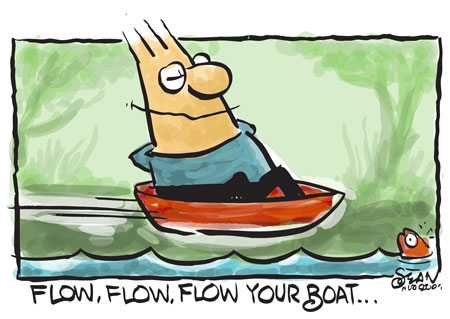
How To Know If Your Article Is Exciting Enough For The Reader
When you complete an article, you always have one of two reactions
You think it rocks. Or you think it sucks. And you may be wrong on both fronts.
You may think your article rocks, when in fact it sucks.
And vice versa.
So how do you know if your article works?
You would think you needed to read your article from start to finish, don't you?
Quite the contrary: You don't read the article at all. You simply scan the article. And when you're scanning, here's what you're looking for:
1) The headline.
2) The first fifty words.
3) The sub-headlines.
4) The ending.
That's it.
If you can see a flow from headline through the sub-headlines down to the ending, you know your article is working.
And the reason why it works is because it's answering all the questions that a reader would possibly ask. Now the only question is: When do you do this audit? Before or after you write the article?
That's a toughie, because your situation determines how you write an article.
On some days will write an article from start to finish based on a ‘response'. So if you're in a forum or a blog, and someone posts something, you'll find yourself all fired up and you'll write a detailed answer.
In many cases, your answer will have all the power and completeness of a finished article because you're trying to make sure you cover all the points. In such a situation, all you need to do is make the sub-headlines bold (if you don't have sub-headlines, invent them for the sake of the exercise). Then audit the article for flow. A touch here, a move there, and your article will be ready.
But what if you're starting up from the ground up?
If you're starting up from ground zero, you need structure. The structure comprises of the headline, the first fifty words, the sub-headlines that answer the questions ÔWhat? How? Why? When? Can you give me proof? Can you give me an example?Õ And then the ending paragraph of the article. If you follow this systematic approach, your article will flow a lot better than most written material.
But first let's take an example using an actual article
Headline: The Power of Connectors in Copywriting
First fifty words: You've started reading a newsletter. And before you know it, you're at 500 words. Then at 750 words. And hurtling past 1000 words. How on earth did you end up reading so much, when all you wanted to do was skim through the article? The answer is in the connectors in copywriting.
The sub-headlines:
– So what are the connectors in copywriting?
– Do you see what's happening?
– A connection is like a bridge
– Why is this slip-sliding so very important?
– Example, Example:
– Personal Experience:
Ending: If you noticed, the content in this piece didn't have enormous style. It lacked stories. It lacked metaphors. And yet it made a distinct point. It taught you something very powerful. Of course, the biggest reason you continued to read, was because of the connectors. Every movie, article or sales letter that's brilliant always has a connection. Create the connection and your reader will read from start to finish!
See the flow in that article?
Once you have flow in the sub-headlines, what you have is solid structure.
And that's what makes an article exciting: the ability to answer all the questions of the reader in a systematic, easy flowing manner.
That's your internal audit system. That's how you know if your article really rocks. Or sucks.
Way better than just “wondering” if it rocks. Or sucks.
Want to get more goodies?
Next Step: More Goodies: Find the entire series on article-writing (articles not tips) in text and audio with cartoons!
Subscribe : Get Updates via RSS | Get Updates via Email (Fill in your details in the top-right hand form)
Don’t forget: To share the article via twitter, facebook, email, blog or your newsletter

So the article rocks if there is flow and structure?
And there is flow if there are connectors and the there is the structure if there are subheads?
I like the article audit Sean thanks
Alex
Being an artist, I like the cartoon!
But you give excellent advice and I have bookmarked this page.
Thanks,
Judith
The article rocks if the reader will love it and read it right to the bottom.
The reader doesn’t measure it consciously in terms of structure.
But for us emotionally-involved writers trying to evaluate our writing objectively, the ‘audit’ is a winner 🙂
Sean,
Another great article. I not only can use the tips, but your demonstration of them in your post.
Thank you.
Nice article…this is what I just need. My boss thinks my article needs more flow. I reread my work and I really don’t know how to put the “flow” in it. This article helped, really. Thanks!